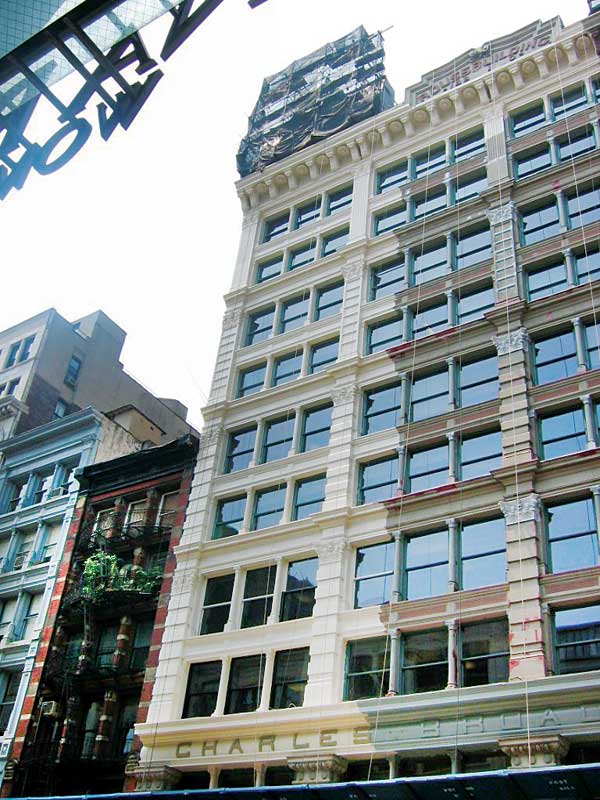Assessing failure and deterioration
Over time, paints and coatings require replacement. Since their lifespan depends largely on the condition of the substrate to which they have been applied, coating failure may be symptomatic of larger building distress. Before replacing peeling paint or a failed coating with another coat, it is advisable to investigate the condition(s) that may have led the coating to deteriorate.
If the paint film or coating failure is not attributable to other building conditions, potential causes for premature breakdown may be related to inferior paint composition, poor surface preparation or application techniques, incompatibility of different paint layers, or exposure due to climate or proximity to water-shedding elements. Higher-grade coatings tend to have longer life expectancies, but the lifespan of any coating can be cut short by environmental conditions or faulty workmanship.
Some of the common conditions and deterioration mechanisms include:
- peeling and blistering—loss of adhesion between coating layers (cohesive failure) or at the interface with the building element (adhesive failure), typically caused by inadequate surface preparation, incompatibility between coating layers, trapped water vapor, extreme temperatures, or too rapid drying and entrapment of the volatile vehicle;
- wrinkling—deformation of the coating that may be due to application on a cold surface, layers applied too thickly, or application before the previous coat has dried;
- crazing, checking, or microcracking—fine patterns of cracking in brittle or excessively thick coatings that cannot expand or contract to accommodate dimensional changes in the substrate; often the result of low-quality paint, insufficient drying time between coats, trapped moisture, or long-term ultraviolet (UV) exposure;
- alligatoring—deep, open cracks resembling an alligator’s hide can result if crazed or cracked coatings are not replaced, or if built-up paint layers form a thick coating that is exposed to years and years of UV radiation;
- chalking—a powdery surface that is caused by photochemical breakdown of the binder, usually due to UV exposure; and
- discoloration—stains and changes in color that may result from a number of factors, such as biological growth, environmental conditions (including pH levels and light exposure), and oxidation.

Restoration
Particularly for historic structures, restoration typically includes research and testing to identify the original building appearance, or that at a significant date. In addition to examination of historical records and period photographs, the investigation may include collection and laboratory analysis of paint samples to assess the structure, composition, and color of what can often be many layers of paint.
If the intention of restoration is to revert to an uncoated surface and expose the substrate, it is important to consider the reason the coating was initially applied. If the coating was used to disguise poorly executed repairs or cover deteriorating masonry, it will likely be necessary to restore the integrity and soundness of the substrate before reversion to an uncoated surface or reapplication of the coating. If paint was applied to conceal unmatched repairs or mottled surfaces, coating removal may yield an unsatisfactory appearance. To determine underlying conditions, test panel removals are recommended.
In the case of historic or older structures for which paint is part of the building character, the properties and appearance of the original coatings should be reproduced to preserve the architectural aesthetic. Removal of older, built-up paint layers is necessary to achieve a sound substrate for recoating.




